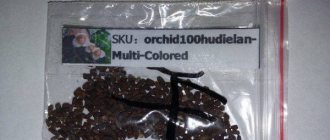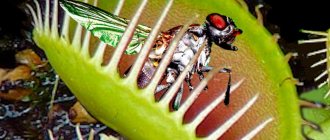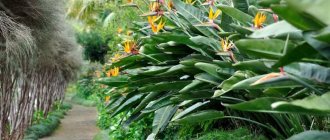Each summer resident has his own way to make the site the most original. Some people rely on exotic plants that require an eye and eye, while others prefer to use already familiar flowers for decoration that do not require special conditions.
Eustoma can rightfully be classified as one of these delightful plants. This flower miracle is cultivated in open ground as an annual. This is due, first of all, to climatic conditions - in the middle zone, a flower rarely manages to successfully overwinter.
Eustoma reproduces only by seeds. Other methods of propagation are not suitable for it: eustoma cuttings do not germinate, and the root system does not tolerate division.
Of course, to grow a plant in your summer cottage, you still have to put in some effort. And the most important thing is to comply with the sowing deadlines. In order for eustoma to have time to grow and bloom, seeds should be planted for seedlings in December-January (but no later than February). It begins to bloom immediately after the first shoots appear (17-20 weeks after planting). If you don’t meet the deadlines, then this beauty will have to bloom in the fall, and this is dangerous: it can be destroyed by autumn frosts. If you do not plan to transplant the eustoma into open ground, the optimal time for sowing in this case is June or July.
When to sow seeds for seedlings?
The timing of sowing depends on when you want the eustoma to bloom. Flowering time depends on the variety, seed quality, growing conditions at home and the climate in which your garden plot is located.
Most modern hybrid varieties of lisianthus bloom 150-180 days after sowing the seeds and 70-100 days after transplanting the seedlings into open ground. At the same time, in the south of Russia a little earlier than in colder regions.
Approximate sowing dates
- North-West (Leningrad region and neighboring), Moscow region (Moscow region and neighboring), Central Russia (Voronezh, Lipetsk and neighboring regions). From November to the end of January.
- South of Russia (Krasnodar region). From December to early March.
- Volga region, Urals and Siberia. Dear gardeners, we advise you to focus on November and December, since your climatic conditions can vary significantly even within the same region. With the accumulation of personal experience, you will find your optimal planting dates.
Attention! On seed packaging, manufacturers themselves often advise sowing seeds in February-March. However, in practice, the plant often does not have time to bloom already in the conditions of the Moscow region.
Therefore, many experienced flower growers from the Moscow region and the North-West prefer to plant lisianthus seeds on seedlings from early December to early January so that they have time to bloom.
Favorable days in 2022
If you prefer to coordinate your work with plants with the lunar calendar, then we have recorded favorable days for sowing eustoma seeds and replanting them in open ground.
- February: 6-8, 11-17, 21-25.
- March: 12-17, 19-20.
- April: 6-8, 11-13, 15-17, 29.
- May: 8-17, 21-23, 26-28.
- June: 1, 2, 5, 6, 9-13, 20-26.
- July: 8-10.
- November: 6-8, 13-18, 24, 25.
- December: 4-5, 17-19, 27, 28.
We also recommend that you read:
- FAVORABLE DAYS FOR SOUDING AND PLANTING ACCORDING TO THE LUNAR CALENDAR IN 2022 – TABLE!
- LUNAR CALENDAR OF TRANSPLANTING INDOOR FLOWERS FOR 2019!
You can find out more about planting dates in a separate material:
WHEN IS IT BETTER TO SOW EUSTOMA SEEDS FOR SEEDLINGS?
Where to buy seeds
Today we talked about growing eustoma from seeds - when to plant eustoma seedlings in 2022 and how to do it correctly. Despite all the capriciousness, the wondrous beauty of the flower is worth trying to tame the overseas beauty and place it in your garden or home.
Some sources:
- Bible of garden plants / I. Berezkina, N. Grigorieva.
- Garden flowers from snow to snow / L. Bobrovskaya
- The best garden flowers. Large illustrated encyclopedia / I. Peskova, A. Lysikov
- Garden flowers / R.A. Karpisonova
Elena Chursinova A practical gardener with twenty years of experience. I prefer organic farming and lazy gardening.
How to sow correctly?
We recommend sowing eustoma seedlings in the ground or in peat or coconut tablets. It is better to sow seeds on toilet paper or in a “snail” as an experiment rather than to gain first experience.
Priming
This is the cheapest option for growing seedlings, since ready-made store-bought soil is cheaper than tablets. Perfect for those who plan to plant not only eustoma in the spring.
Soil composition: any universal soil for indoor plants or seedlings with pH 5.5-6.5 based on high-moor peat and sand – 2:1. 2nd option: turf (garden) soil and sand (agroperlite/vermiculite) – 1:1.
Step-by-step instruction
- Place a 3-4 cm layer of moist soil mixture at the bottom of a transparent container (seedling cassette).
- Using the back of a pencil (pen, brush), make grooves 2-3 mm deep. The distance between rows is 4-5 cm.
- Place the granules along the grooves so that there is 3-4 cm between them. After placing all the seeds, spray them on top with a spray bottle.
- Cover the container with film, glass or a transparent lid and place in a bright place with an air temperature of 20-22 °C.
Sterilization
If you are planting in garden soil, we recommend sterilizing it (heating, steaming) or spilling it with Fitosporin-M (0.5 g (knife tip) / liter of water) 1-2 days before planting. This will reduce the risk of bacterial and fungal diseases.
You can read about soil sterilization here:
SOIL MIX FOR HOUSE PLANTS – COMPONENTS OVERVIEW!
Peat or coconut tablets
The advantages of sowing in tablets are simplicity and ease, since there is no need to prepare the substrate and look for its components. In addition, special “greenhouses” are now sold with peat tablets included, which is very convenient for the first time.
This method is great for gardeners who want to grow a small number of plants (up to 20).
Step-by-step instruction
- Place peat tablets in a container and fill with warm water to 1/3 of their size. After they have absorbed moisture, pour water directly into them little by little until they are completely swollen.
- After the tablets have completely swollen (3-5 minutes), wait until they cool to room temperature. Then spread the eustoma seeds on each tablet.
- Spray granules and peat tablets with a spray bottle.
- Cover the top of the greenhouse with a transparent lid, film or glass. Move it to a bright and warm place.
Eustoma seeds on peat tablets
Tips
- If desired, you can plant several seeds at the same time in one coconut or peat tablet. Some experienced gardeners sow five granules at once, but for beginners it’s better to put 1-2 pieces. If you want to save money, we recommend cutting the already swollen tablet crosswise into two halves with a blade and placing the seeds on the cut part.
- If the seeds in some peat or coconut tablets have not sprouted, then do not rush to part with them. You can replant seeds of any crops in them, just fill them with warm water again.
Germination conditions and tips
Do not bury eustoma seeds; they should be on top of the soil, as they need light for better germination. At the same time, they do not have to be artificially illuminated, but if desired, they can be illuminated from three to 24 hours a day.
Keep the soil mixture slightly moist. To do this, spray the seeds daily, and once every 1-3 days in the morning, water the soil with a syringe or bulb.
Seeds germinate best at a soil temperature of 20-22 °C. Both higher and lower temperatures reduce germination.
Seed coat
Lisianthus seeds are covered with a special shell. It is best for it to dissolve when sprayed immediately after sowing or in the first 3-4 days. If this does not happen, then destroy it yourself, for example, with a toothpick, so that it does not prevent the seeds from germinating.
We recommend this method: immediately after sowing, place a small piece of aloe stem, cut crosswise, on the granule. Aloe juice is a natural growth stimulant, and it dissolves the granule shell well.
Adviсe
- To make it easier to maintain high humidity of the air and substrate, you can place a 1 cm layer of vermiculite on the bottom of the planting container with soil mixture or tablets (peat, coconut fiber).
- If you sow several varieties of eustoma, then in order not to forget where each one is, prepare different “beacons” in advance, on which write the number or name.
- The granules are quite small, so you can sow them using tweezers or a toothpick with one end dipped in water.
How to increase seed germination and when do they germinate?
Good seed germination rate of 70% and above. The percentage of germination is seriously affected by their freshness. Seeds older than two years under optimal germination conditions rarely show germination rates above 60%.
You can increase the germination percentage if you use growth stimulants, for example: aloe juice, potassium humates, Epin, succinic acid.
- Spill the soil or soak peat or coconut tablets for 1-2 hours in the following solution: chlorella suspension + water – 1:4.
- Or in this solution: two drops of “HB 101” and one capsule of “Energen Aqua” per liter of water. In addition to soaking and watering, it is recommended to spray the seeds with this solution immediately after sowing and every day until they germinate.
Pre-cooling
The guide to growing eustoma from world-famous seeds recommends pre-cooling.
We translated it into Russian as follows: “After you have moistened the soil, sown and sprinkled the seeds, place the container in a dark place with an air temperature of 8-10 °C for 21 days. This will help speed up germination and ensure more uniform germination.”
How many days do the seeds take to germinate?
Under optimal conditions, flower seeds begin to germinate en masse on days 9-10, and in general after 12-16 days. With the use of growth stimulants and in ideal conditions, the first shoots can appear even on days 6-7.
For more information on different sowing methods, see here:
HOW TO SOOW EUSTOMA CORRECTLY?
Growing eustoma seedlings in peat tablets
Each peat tablet must be soaked in water one by one.
Many gardeners have long been using the method of planting plants in peat tablets. Many people love this growing method for its simplicity and effectiveness, as well as for the fact that the plants do not suffer when transplanted into the ground and do not get sick, because the risk of injuring the roots during transplantation is eliminated.
It is also suitable for growing eustoma. Gardeners recommend using medium-sized peat tablets with a diameter of 4 cm for this.
Each peat tablet must be soaked in water one by one. To do this, they are dipped into a plastic container, previously washed with a solution of potassium permanganate. Add water to the container as the tablets swell; you don’t need to pour a lot of water at once. When the tablet swells, a depression is made in it, into which the eustoma seeds are placed. They do not need to be pressed down or covered with soil.
After this, the container is covered with a lid or plastic wrap. To provide the seeds with access to fresh air, the lid (film) must be lifted periodically.
Initially, eustoma will need bright but diffused light: this will help the seedlings to germinate compactly, they will not be too elongated. To do this, the container is placed under a fluorescent lamp. The daylight hours of eustoma should last 12 hours, so provide the plant with additional lighting.
Towards the end of winter, the seedlings are moved to the windowsill on the sunny side.
Shoots have appeared, what to do?
Eustoma shoots appear rather slowly. At first you see a small green dot, which then resembles an arc. The future stem gradually straightens and after 2-3 days tiny leaves are already visible.
- Seedlings need the maximum amount of light, so place the “greenhouse” in the brightest place on the windowsill or keep it under a lamp. Daylight hours should last at least 13-16 hours.
- Seedlings need to be grown at a temperature of 18-24 °C. At the same time, at night it should not rise above 22 °C and fall below 15 °C. Try to find a balance between the radiator and the window. If the “greenhouse” is on a windowsill, then be sure to place a blanket or blanket under its bottom and on the side of the window.
- For the first 3-4 days after massive seed germination, ventilate the container for 10-20 minutes in the morning and evening. Every morning, lightly moisten the soil between shoots using a syringe with a needle.
- After the formation of the first pair of leaves (3-5th day) for all seedlings, the container no longer needs to be closed. However, if not all the seeds have sprouted or it’s cold at night, then keep the “greenhouse” open from morning until evening, and cover it with a lid at night so that they can still germinate. This regime can last up to 10-15 days.
Ventilation promotes better adaptation of seedlings to room conditions and helps prevent the appearance of rot from excessively high air humidity.
Eustoma shoots are 7 days old.
Answers to frequently asked questions
Beginning gardeners have some questions when growing Eustoma seedlings.
What soil should I buy for growing seedlings?
Universal soil is suitable for Eustoma seedlings. It is allowed to use soil for Saintpaulias.
How can you stimulate seeds for further growth?
Seeds for cultivation can be soaked in a growth stimulant solution.
Why don't the seeds germinate?
Seeds usually do not germinate because they were not soaked before planting. The second reason is that they are too deep in the ground. The third is low-quality seed material.
Is it possible to use growth stimulants?
Yes, it is quite. Seeds can be soaked in Epin or Zircon solution for better germination. Among natural growth stimulants, a solution based on aloe juice is suitable.
You can also soak the seeds in a hydrogen peroxide solution.
Why are seeds soaked?
When growing seedlings, seeds are soaked so that they germinate faster. Otherwise, they will lie in the soil longer. Also, after soaking, you can see which seeds have not sprouted and do not plant them.
How to harden seedlings?
Hardening is necessary so that the seedlings get used to their new climatic conditions. Harden off the seedlings gradually. First, they are accustomed to lowering the temperature. To do this, you can take the pots to the balcony or veranda. The young plants are then left outside overnight. When Eustoma gets used to the new temperature regime, she is moved outside and accustomed to direct sun and wind.
What to do if Eustoma seedlings do not grow?
Firstly, Eustoma grows very slowly. Secondly, slow growth is usually caused by improper growing conditions. Increase daylight hours, normalize the watering schedule and feed the seedlings with a growth stimulant.
Growing conditions: lighting, temperature, soil
In order to grow eustoma from seeds at home, it is necessary to comply with the growing conditions. Namely: lighting, air and soil temperature, air humidity level and substrate.
Lighting
Immediately after emergence, it is necessary to ensure a minimum of 13-16 hours of daylight. Therefore, you need to resort to artificial lighting.
Find out which lamp to choose here: LAMPS FOR LIGHTING PLANTS – TYPES AND TIPS!
Soil and air temperature
The optimal soil temperature for successfully growing seedlings is 13-23 °C. If the air temperature drops below 15 °C at night, the seedlings stop growing.
And if it is above 22 °C, then there is a high risk of the formation of a rosette of leaves and the flower will begin to develop like a biennial plant, i.e. will bloom next year.
Priming
During the first picking, lisianthus needs to be transplanted into more nutritious soil than the one in which the seeds were sown. Garden stores mainly sell peat-based soils (70-80%) with a similar composition.
Therefore, regardless of its name (“Universal”, “For seedlings”, etc.), the main condition for purchase will be a pH level close to 6.0-6.8. The packaging usually indicates pH 5.5-6.5.
Then, if possible, add 1/3 of your garden soil or turf soil, if you find it on sale, to the purchased peat-based soil.
To prepare your own soil mixture, we recommend the following composition: high-moor peat, humus (leaf soil, compost), garden soil and sand – 2:1:1:0.5.
WE ADVISE YOU TO READ:
- WHAT IS THE BEST SOIL TO USE FOR SEEDLINGS?
Examples of different soils with similar composition and pH levels
How to prepare planting material for sowing
It is generally accepted to germinate seeds before sowing. To do this, the planting material is wrapped in wet gauze and placed in a warm place.
After a few days, the seeds germinate. You leave the sprouted seeds for further work, and those that do not show signs of life can be put aside.
The selected material must be disinfected with a 1% solution of potassium permanganate. After which the seeds are washed with clean water.
Planting material can also be soaked in a solution with a growth stimulator.
Seeds
ON A NOTE. In order not to spend extra time with seed material, it is better to immediately buy coated seeds. They do not require additional processing at home.
Watering seedlings
The soil mixture should be slightly moist most of the time. It is better to water eustoma seedlings with a small amount of water, since excessive watering leads to the development of blackleg and its death.
Water the seedlings after the top layer of soil has dried, about once every 2-4 days, and if they grow in peat or coconut tablets, then once every 1-2 days. The frequency of watering is mainly affected by plant size, light level, air temperature and substrate composition.
Before the pick
After the seedlings appear and before the first picking, you can only water the soil around the seedlings to avoid rotting of the stems.
After the pick
- After the first picking (seedlings take 40-60 days) and before transplanting into open ground, water the seedlings only at the root. Drops of water should not fall on the leaves and stem of the plant.
- For watering, use a syringe with a needle or a rubber bulb to avoid washing out the roots.
- It is better to water the seedlings in the first half of the day so that the flower has time to “drink” enough water.
- Water the seedlings with settled water at room temperature.
REFRESH YOUR KNOWLEDGE:
- WHAT WATER IS BETTER TO WATER PLANTS?
- METHODS OF WATERING PLANTS - ADVANTAGES AND DISADVANTAGES!
How to select and prepare soil for growing eustoma
The flower loves light, loose soil with good aeration. Soil acidity - no more than 7pH.
The simplest solution would be to buy soil in a store. But experienced gardeners often make their own substrate.
For growing eustoma, soil made up of 1 part fine river sand, 2 parts garden soil and 4 parts peat is suitable.
If you prepare the growing substrate yourself, do not forget to disinfect it. This can be done by calcining the soil in the oven or treating it with fungicides.
Feeding eustoma
After the seedlings are 10-15 days old, you can begin feeding. We recommend doing it no more than once a week, but preferably once every 14-18 days.
Before the first pick
In this phase of development, plants actively grow their root system. To do this, they first need a sufficient amount of phosphorus, and for its absorption, potassium and nitrogen.
Therefore, use any complex or “seedling” fertilizer that contains more phosphorus and potassium than nitrogen.
- “Weaving” for seedlings (Nitrogen (N) – 12, Phosphorus (P) – 37, Potassium (K) – 16). 16-20 rubles for 20 g stick.
- “Living force” “Healthy seedlings” (N – 2, P – 11, K – 12, + humic acids). 130 rubles for 500 ml.
- “Fertika Lux” for vegetables and seedlings (N – 1.6, P – 2.1, K – 2.7). 135 rubles/250 ml.
Attention! Before the first picking, fertilize with 30-50% of the recommended dose.
After the pick
After the first transplant, the eustoma can be fed with the same fertilizer for seedlings or a complex fertilizer, or you can take other options with a higher nitrogen content.
Fertilizers based on vermicompost are excellent, for example “Universal biohumus” (N – 6, P – 5, K – 4. 1 tsp per 2 liters of water).
If desired, you can supplement the feeding with growth stimulants: “NV-101” (2 drops per liter of water), “Epin” (5-6 drops per 500 ml of water with 2-3 citric acid crystals) or “Zircon” (3 drops per 200 ml of water). ml of water).
In order for the seedlings to take root better after picking, water them with “Kornevin” (20-30 rubles, 5 g packet per 5 liters of water).
Calcium nitrate
To maximize root development, prevent the appearance of root rot and increase resistance to various bacteria, it is necessary to use calcium nitrate specifically for eustoma.
Application. Stock solution – 1 tbsp. spoon per liter of water. Then 2 teaspoons of mother liquor per liter of water. After watering with plain water, feed the seedlings with the resulting solution once a month.
Adviсe
When using root (watering at the root) and foliar (spraying) fertilizers, we recommend alternating them to enhance the effect.
Attention! To avoid burning the roots with chemicals, first water the flowers with just water, and then with a solution with fertilizers.
WE RECOMMEND READING:
- HOW TO FEED CORRECTLY? SECRETS OF FLOWER GROWERS!
- OVERVIEW OF TYPES OF FERTILIZERS AND TIPS FOR APPLICATION!
- WHAT ARE THE BEST FOLK REMEDIES TO FEED PLANTS?
Bad days
In the following table we have listed the worst days for planting Eustoma in the first half of 2022 and the last months of 2020.
| Month | Numbers |
| November 2020 | 15, 30 |
| December 2020 | 14, 30 |
| January | 13, 28 |
| February | 11, 27 |
| March | 13, 28 |
| April | 12, 27 |
| May | 11, 26 |
| June | 10, 24 |
ON A NOTE. Other days that are not included in any of the tables above are considered neutral. These days you can plant seeds, but the plants will not be characterized by accelerated development and increased resistance to disease.
Picking and pinching
Timely picking ensures the correct development of eustoma. Late transplantation is fraught with worse rooting and slower growth.
When is the best time to dive?
The right moment for picking is not difficult to find out: the plant already has two pairs of leaves, and it itself is already about 1.5-2 cm in height or the roots are already visible at the bottom of the container. If you sowed in peat or coconut tablets, then immediately dive as soon as you see the roots.
The time for the first picking usually occurs 40-60 days after emergence.
How many times should you dive?
The sowing method you choose and the pattern of growing seedlings determines the number of picks. The classic scheme for growing eustoma from seeds: the first picking in a 200 ml glass - after two to three months in a 500 ml glass - transplantation into open ground.
This scheme can be simplified and planted immediately in a 500 ml glass, a pot of 8-12 cm in diameter or large cassettes for seedlings.
Picking step by step
Eustoma transplantation should be carried out exclusively by transshipment in order to avoid damage to the delicate roots.
- Pour the prepared soil into picking containers and then compact it. You need to pour in such an amount of soil that there is room in the glass for a flower with a lump of earth.
- Scoop the seedling with a spoon or spatula at a sufficient distance from the stem so as not to damage the roots.
- Place the plant with a ball of soil just below the top edge of the pot. Fill the voids along the edge of the container with soil mixture, compacting it little by little.
- Water the seedlings with a small amount of water. If the soil has noticeably subsided, add it and water again. If you have Kornevin, you can water it with it.
- For the next 5-6 days, protect the flower from direct sunlight and keep the substrate slightly moist so that it takes root better.
You can read more in this article:
SUBTLETS OF EUSTOMA PICKING!
Pinching
Tall varieties of eustoma need to be pinched so that it branches better and a larger number of peduncles are formed. Accordingly, you will get more massive flowering.
You need to pinch the top of the flower after 3-4 pairs of leaves have formed.
- Attention! Low-growing varieties of lisianthus (height 20-30 cm, as a rule, grown as indoor flowers) do not need to be pinched. They have excellent bushiness in their genes.
Popular varieties with photos
In the past, eustoma had a strong stem and grew up to one and a half meters in height. In addition, it did not differ in a wide variety of shades, but was limited only to the blue or light blue color of the petals. Thanks to selection, a large number of new varieties have been developed with inflorescences similar to roses, tulips or bells, the color scheme of which includes all kinds of solid shades or a combination of them.
Now there are about 60 species in the eustoma genus. Tall varieties are intended for cultivation on the site, the average height of which varies from 0.6 to 1.2 m. For home use, low-growing varieties are bred, not exceeding 45 cm in height.
There are various forms of inflorescences in the Texas bell family, but they are all divided into two groups:
- Terry.
- Non-double.
There are hybrid varieties that are distinguished by rare flower colors, longer and more abundant flowering, and resistance to various diseases. The only drawback is the absence of these characteristics in offspring grown from hybrid seeds. On the packaging it is designated as F1.
Among all varieties, these occupy a special place.
Aurora
The most popular tall variety, growing more than a meter in height. Double flowers can be of different shades:
- white,
- blue,
- pink,
- blue.
It differs from other species in its early flowering, and the flowers retain their decorative appearance and freshness for a long time.
Carmen
A hybrid variety suitable for growing in pots as it grows up to 25 cm in height. The flowers are large - up to 5 cm in diameter, with a rich purple hue. They are located close to each other, which gives the plant a spherical shape.
Echo
The bush is very spreading, growing up to 70 cm in height. The variety is distinguished by large buds with a single or two-color color.
Mermaid
The dwarf variety, whose height does not exceed 15 cm, is distinguished by lush flowering and does not require pinching. Simple flowers of various shades:
- lavender,
- white,
- pink,
- blue.
White Kyoto
The variety is characterized by early flowering and rapid growth. The large white flowers have a pleasant aroma and are great for cutting.
Advice from experienced gardeners
Tatiana:
“Eustoma requires special care. If you sow it in December, you will get results in six months. Yes, for a long time. But it can be grown all year round. She basically doesn’t care when you put her away. She likes to have drainage under her roots, she likes a sandy mixture.”
Tatiana:
“I’ve been growing eustoma for a very long time. It grows better in open soil and transplants quite well. If it didn’t bloom at home, it will bloom perfectly in the ground. You can collect seeds, they germinate very well.
Marina:
“If the eustoma has sprouted, but does not grow, you need to feed it with nitrogenous fertilizers, weak urea, and urea. But it’s important to know that eustoma grows very, very slowly.”
It is also recommended to use more organic matter and more nitrogen to increase green mass, and to share potassium and phosphorus to form flower buds.
Some gardeners also advise watering with cold boiled water at first. This is very important, as it will help ensure the safety of watering small sprouts.
Seed selection and preparation
It will be possible to grow “your own” seeds if it is a species eustoma, not a hybrid. Stores most often sell seeds of hybrids that do not leave offspring. Therefore, eustoma seeds are most often purchased in the store. They are found often, and now such a huge number of varieties have been bred, in different shades, that it’s dizzying.
Growing lisianthus from seeds is a painstaking and time-consuming process. But, despite all the apparent problems, many gardeners love to grow flowers from seeds, and they are not afraid of any difficulties. From my experience I can say that I managed to grow this flower the first time. From purchased seeds. Germination was good. My eustoma bloomed after a few months.
Eustoma seeds are very small, so they are often sold in granules. The nutrients contained in the granules accelerate seed germination. Seeds do not germinate evenly. Good germination is considered to be approximately 60–70% of the total seed volume. If you have your own seeds, then, as a rule, the germination rate is 100%, provided that the seeds are fresh. The longer the seeds sit, the worse the germination rate.
Photo: Growing lisianthus from seeds is a painstaking, time-consuming process.
| Advice. When purchasing, always look at the manufacturing date. Ideally, the seeds will be from the same year that you buy them. |
Caring for eustoma seedlings - video
Eustoma is a beautiful plant, whose buds can decorate any place in the garden, whose pastel shades will delight you for quite a long time. The growing process is not that complicated, so it is easy to understand even for a novice gardener.
Remember that in order for eustoma to delight you with its active growth and abundant flowering, you must follow all the rules of cultivation. Pay special attention to growing seedlings, on which the future of your flower depends.
Be sure to take the time to analyze the main problems of growing seedlings in order to prevent them from occurring in your practice. If you follow all the advice, eustoma will definitely thank you.
Soil preparation
The soil should be neutral and loose, well permeable to water and air. A special soil for Saintpaulias (violets), which is sold in stores, is suitable for Eustoma.
Or you can prepare it yourself. It is necessary to mix garden soil in a ratio of 1:2:0.5 (it is better to bake it in the oven at 90°C for half an hour), humus or peat and sand (to loosen the soil). Sand can be replaced with vermiculite. If the soil is acidic, then you need to add a little lime.
You can disinfect the soil with a solution of Fitosporin or a solution of potassium permanganate.
Selecting a landing container
Peat pots, plastic cups or small boxes are suitable for planting seeds for seedlings. It is also good to use peat tablets for sowing (considered the best option).
If boxes are chosen for planting, be sure to first put drainage (expanded clay, perlite) on the bottom of the box and pour the prepared soil on it.
How to care for a flower in summer
It is in the summer that eustoma blooms. It starts in July and ends in September. Initially, eustoma is a very fragile plant, and then it turns into a large bush with a bouquet of flowers. During flowering, the plant needs to be watered more. Also, do not forget about mulching the soil around the flowers.
If the summer is rainy, you need to be extremely careful with the plant. Getting wet can start the process of rotting. This then increases the risk of the plant being damaged by a fungal disease. If this has already happened, then the affected leaves and flowers need to be removed and the eustoma treated with Fitosporin or other fungicides.
Flowers that have already bloomed can be safely cut off, this way you will give the opportunity for new flowers to grow. Flowering in eustoma is quite long and abundant.
How to increase flowering
In order to increase the flowering of eustoma, it is very important to follow all the subtleties of cultivation.
- Protect young plants from frost.
- Carry out preventive measures to protect against pests and diseases.
- Select the optimal watering mode.
- Fertilize in a timely manner and do it correctly.











